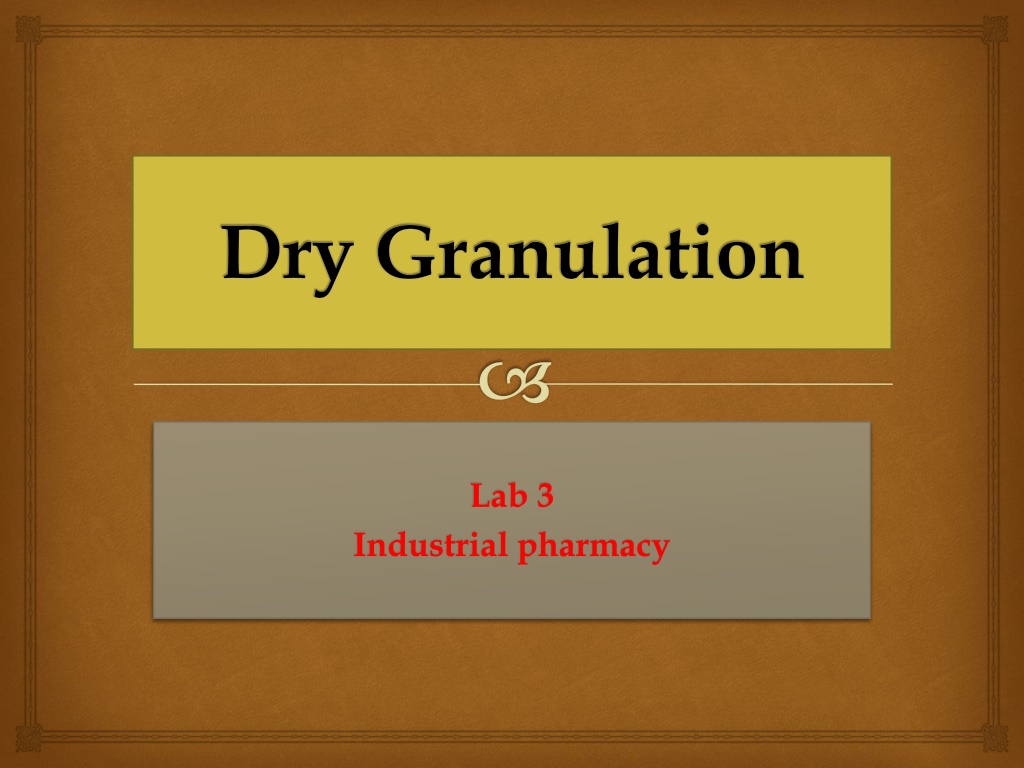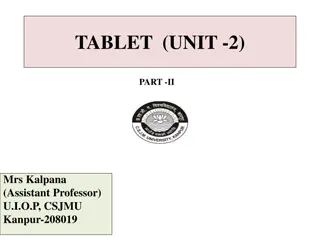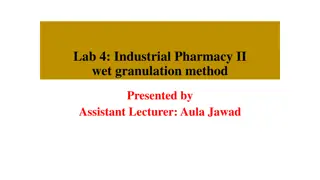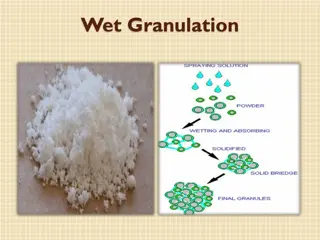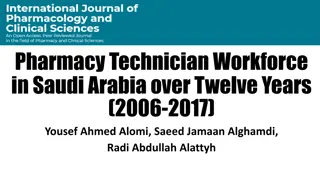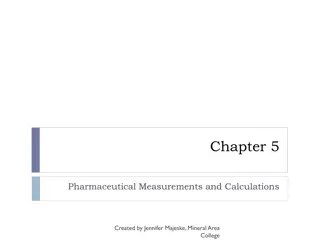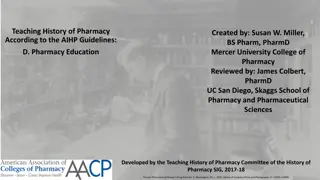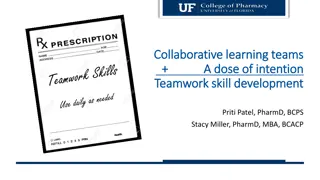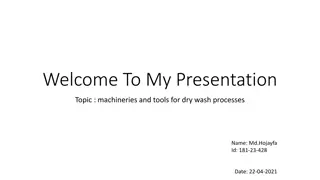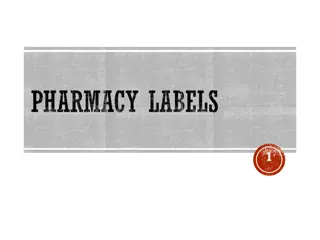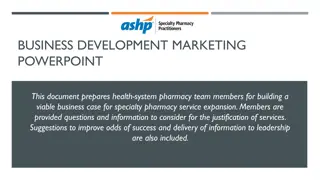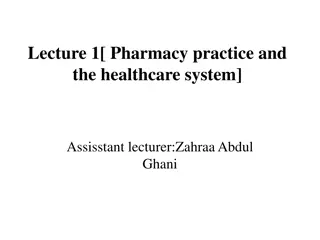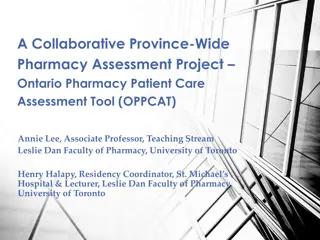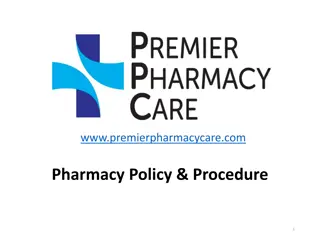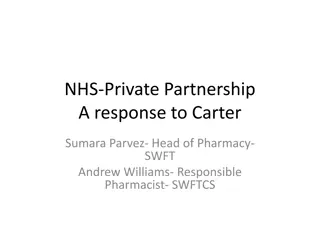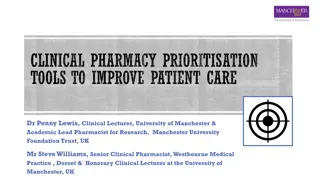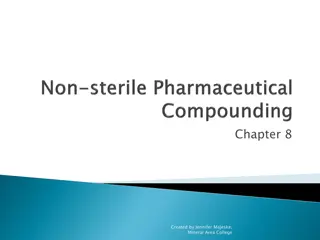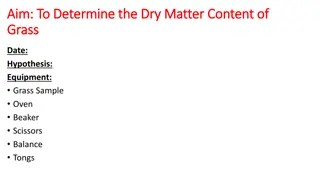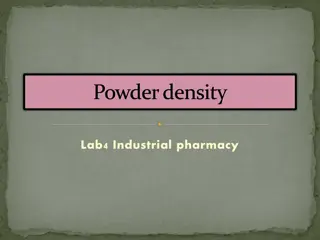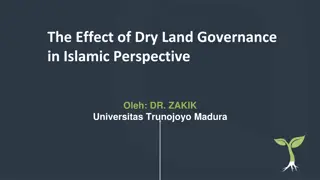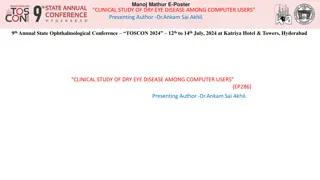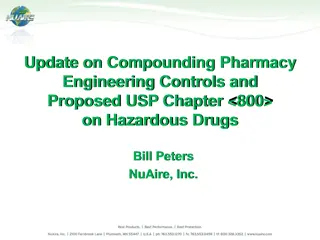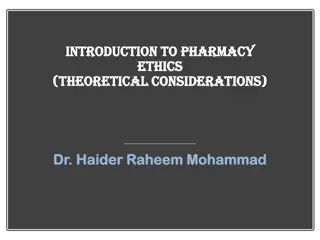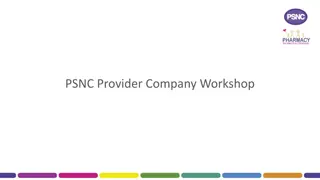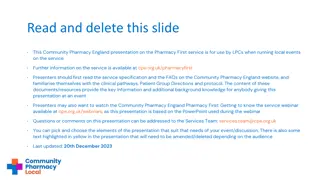Understanding Dry Granulation Techniques in Industrial Pharmacy
Dry granulation is a crucial process in industrial pharmacy where primary powder particles are agglomerated to form granules, offering various benefits such as preventing segregation, improving flow properties, and enhancing compaction characteristics. Secondary reasons for granulation include reducing hazards associated with dust generation and improving storage efficiency. Techniques like slugging and roller compaction are commonly used in dry granulation to create granules for further processing in tablet manufacturing operations.
- Dry Granulation
- Industrial Pharmacy
- Granulation Techniques
- Tablet Manufacturing
- Pharmaceutical Processes
Download Presentation

Please find below an Image/Link to download the presentation.
The content on the website is provided AS IS for your information and personal use only. It may not be sold, licensed, or shared on other websites without obtaining consent from the author. Download presentation by click this link. If you encounter any issues during the download, it is possible that the publisher has removed the file from their server.
E N D
Presentation Transcript
Dry Granulation Lab 3 Industrial pharmacy
Dry granulation Granulation is the process in which the primary powder particles are made to adhere to form large multi entities called granules. Primary reasons for granulation: To prevent segregation. To improve flow properties of the mix. To improve compaction characteristics of the mix.
Secondary reasons for granulation Reduce the hazard associated with the generation of toxic dust which may arise when handling powder. Reduce the hazard associated with the storage of powder that is slightly hygroscopic and may adhere to form a cake. More convenient for storage and shipment as it is denser than powder and occupies less volume per unit weight.
Dry granulation preparation of granules by dry compression [compaction] (powder particles aggregate at high pressure) Then milling to random size Then in dry granulator or homogenizer To get certain size. Wet granulation granules are formed by addition of binder solution and sieving.
Unit operations in tablet manufacturing Dry granulation Wet granulation Direct compression Drug Diluent Lubricant Mixing Drug Diluent Glidant disintegrant Mixing Drug Diluent Mixing compression Wetting granulation Binder solvent comminution Drying Disintegrant Glidant Lubricant screening Disintegrant Glidant lubricant Screening lubricant Mixing Mixing Mixing Compression Mix Fill die, Compress tablet, Eject tablet Metal check, dedusting, coating, package 5
Methods of dry granulation A. Slugging technique (double compression) B. Roller compaction technique 6
A- Slugging technique: Slug: large flat tablet (large compact) or pellets contains half amount of lubricant, but its not actually tablet because it doesn't obey the method of evaluation or assay of the tab. 1. 2. 3. Prepare the formula Milling Weigh all the substances and amount of lubricant. (Because it is needed during slugging by tablet machine to eject the slug from die). Mix well by mixer and compress into large tab. (slug) using large punch and die (diameter to 1.25 inch). Grinding slug by dry granulator or homogenizer to convert slug to granules. 4. 5.
6. Weigh granules and divide by weight of single tablet to get real no. of tablets Real no. of tablets =total weight of granules before 2nd lubrication/wt. of single tab. before 2nd lubrication Second compression after addition of calculated amount of lubricant, mix and compress by normal machine. 7. Question ; why we calculate the real no. of tablets?
Rollers or chilsonator roller compactor Two rolls rotate against each other, to increase the density of powder by pressing it between the rollers and get a thin wide sheet or ribbon equivalent to produced by slugging, then these ribbons or aggregates are screened uniform granules. the slug to produce
Advantages of dry granulation More economic, less space, less equipment than wet granulation. No need for drying so it is not time consuming. Used for moisture sensitive materials. The disintegration time is improved because the binder used in powder form, so the adhesive effect is less so fast disintegration. No migration of colors (mottling) that may occur in wet granulation because of presence of moisture.
Disadvantages of dry granulation Slugging required specialized heavy duty machine Produces more dust which may cause contamination of the product. Decreases the dissolution of insoluble drugs. Generation of charges of static electricity that affect the flowability
Advantage of roller compactor over slugging Increased product capacity Greater control on compaction pressure and dwell time No need for excessive lubrication of the powder.
Preparation of sodium phenobarbital tab. by using dry granulation Organoleptic properties (crystalline powder) Solubility (freely soluble in water 1:3) Stability (phenobarbitone is not affected by heat or moisture, but sod. Phenobarbital decompose by heat and moisture so it s hygroscopic by absorbing CO2 from atmosphere to convert to phenobarbitone).
Question. Sod. Phenobarbital can not be prepared by wet method while phenobarbitone can be prepared by wet method . Why? Both of them can not be prepared by direct compression . Why?
Question. Lactose and emcompress (dicalcium phosphate) both are used as diluents in this formula. What are the benefits of adding both diluents in this formula? Two tablets, one prepared by dry granulation and the other is prepared by wet granulation. Which one do you expect to have faster disintegration?
Formula Sod. Phenobarbitone 15 mg (active ingredient) Lactose 5 mg ( diluent) Emcompress 20 mg ( diluent) Starch 20 mg (disintegrant) Acacia 10 mg (binder) Sod. Stearate 5 mg ( lubricant) Prepare 30 tablets
Calculations:- Total wt of tablet= 15+5+20+20+10+5= 75 Since, half amount of lubricant should be added in the 1st mixing step So, 5mg/2= 2.5 mg of Sod. stearate per tablet 2.5* 30= 75 mg of Sod. Stearate should added in the 1st lubrication Also, 75-2.5= 72.5 mg wt of single tablet before 2nd lubrication Suppose, the wt of granules mixture before 2nd lubrication are 2040 mg Real no. of tablets= 2040/72.5 = 28.1 tablets Therefore, 2.5*28= 70 mg of sod. Stearate added in the 2nd lubrication
